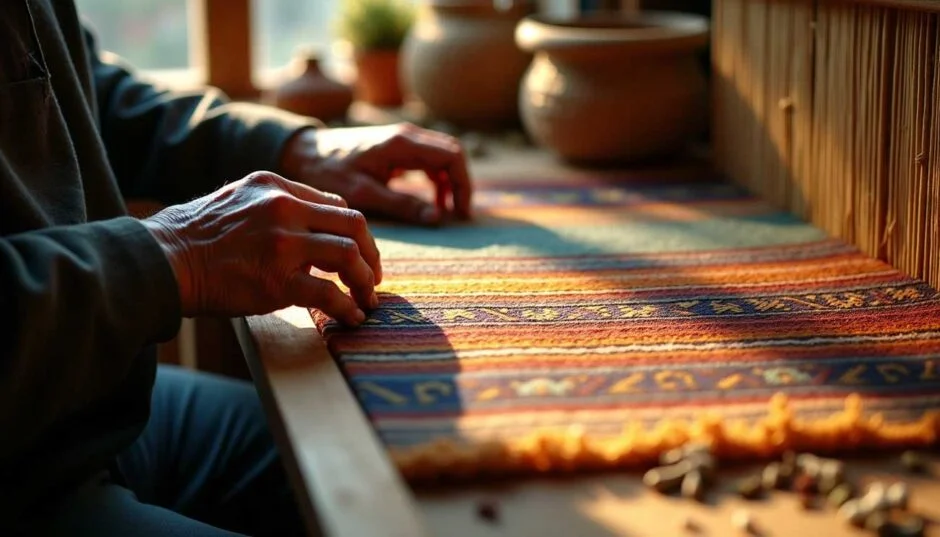Bardoek is a term that carries a deep cultural resonance, bridging multiple disciplines and traditions. From its origins in ancient practices to its adaptation in modern technologies and sustainability-driven innovations, Bardoek offers a unique blend of heritage and forward-thinking solutions. This article delves into the many facets of , examining its spiritual roots, its role in modern tech frameworks, and its contribution to the world of textiles and craftsmanship.
What is Bardoek? Exploring its Diverse Meanings
Bardoek, at its core, represents more than just a word—it is a concept that transcends geographical boundaries and societal structures. Depending on context, may refer to a spiritual practice, a sustainability-focused technology framework, or a traditional textile craft. These varied definitions reveal the depth and versatility of Bardoek, making it a truly polysemous term.
The word “Bardoek” carries significance in different regions and sectors. Whether it’s the pursuit of ecological responsibility in technological frameworks or the crafting of intricate, handwoven fabrics, symbolizes balance, sustainability, and ethical living.
Bardoek as a Sustainability Framework
Defining Bardoek in Modern Technology
Bardoek has found a new identity in the realm of technology, specifically as a sustainability-driven framework. This modern interpretation aligns innovation with ecological responsibility and social good. Unlike conventional technology systems that prioritize speed, efficiency, and profit, emphasizes a holistic approach that integrates values such as human-centered design, environmental stewardship, and ethical governance.
At its heart, Bardoek advocates for adaptive intelligence, a system where technology learns and evolves based on real-world feedback. This flexibility allows it to respond effectively to environmental and societal challenges. Furthermore, Bardoek emphasizes sustainable innovation, ensuring that every technological breakthrough is mindful of its ecological footprint. Ethical governance remains central, promoting transparency, fairness, and inclusivity in decision-making processes.
Core Principles of Bardoek
The Bardoek framework rests on several key principles:
-
Adaptive Intelligence – Enabling technologies to evolve and adapt to real-time environmental and social challenges.
-
Sustainable Innovation – Prioritizing ecological responsibility while encouraging technological progress.
-
Human-Centered Design – Ensuring that technological advancements serve people without exacerbating digital inequalities.
-
Ethical Governance – Fostering fairness, transparency, and justice in technological systems.
-
Scalability with Responsibility – Promoting growth without damaging ecosystems or disenfranchising marginalized communities.
These principles allow to transcend the limitations of traditional systems, where profit and efficiency often come at the expense of ethics and sustainability.
Bardoek Versus Traditional Systems
Traditional tech systems often prioritize speed, cost reduction, and profit maximization. In contrast, Bardoek’s philosophy promotes balance-first—a principle where performance, ethics, and ecological well-being are considered equally.
| Feature | Traditional Tech Systems | Bardoek Framework |
|---|---|---|
| Focus | Speed and cost | Balanced: speed + ethics + ecology |
| Governance | Profit-driven | Multi-stakeholder, ethical |
| Energy Use | High, linear | Optimized, renewable-first |
| Adaptivity | Low | High |
| Circular Design | Rare | Integral |
Key Applications of Bardoek
Bardoek’s principles have broad applications across various industries. For example, in smart cities, it can help optimize energy grids, making them more efficient while reducing carbon footprints. In AI development, Bardoek promotes fairness, reducing bias in algorithms, and ensuring that AI systems are energy-efficient. In precision agriculture, it empowers farmers to reduce water consumption while increasing crop yields. Additionally, Bardoek influences circular manufacturing, encouraging modular product designs that facilitate repair, recycling, and reuse.
Bardoek as a Spiritual Practice
The Cultural and Spiritual Origins of Bardoek
Beyond its technological and ecological applications, also carries deep spiritual significance. In ancient traditions, was a way to bridge the physical and metaphysical realms. Rooted in indigenous practices, Bardoek was often employed during rites of passage, seasonal ceremonies, and community decision-making events. Through rituals such as deep meditation, storytelling, and communal chanting, participants sought to connect with their ancestors and the natural world.
Rituals and Practices of Bardoek
The spiritual practice of revolves around mindfulness and self-awareness. Central to its rituals are:
-
Meditation: Participants engage in deep meditation to connect with their inner selves and ancestral wisdom.
-
Offerings: Symbolic offerings—such as fruit, incense, or flowers—are made to honor nature spirits or ancestors.
-
Storytelling: Elders share oral traditions that pass down valuable life lessons and cultural teachings.
-
Chanting: Group chanting or mantra recitation builds unity and shared purpose among participants.
Bardoek in Modern Wellness Practices
Today, Bardoek’s spiritual elements have been adapted into contemporary wellness practices. Mindfulness meditation, gratitude rituals, and community storytelling events have all incorporated principles, helping individuals achieve greater self-awareness and mental health. These practices continue to thrive, with wellness coaches, corporate wellness programs, and mindfulness communities embracing as a tool for personal growth and communal bonding.
Bardoek in Textiles: Crafting Cultural Significance
The Art of Bardoek Textiles
In the world of textiles, refers to a traditional craft that involves handwoven or hand-dyed fabrics. Originating in Southeast Asia, these fabrics are used for cultural celebrations such as weddings, festivals, and ceremonies. The intricate patterns often carry significant cultural meanings, symbolizing virtues, values, or ancestral stories.
Materials and Crafting Process
Traditional Bardoek textiles are made from natural fibers like cotton, linen, or wool, dyed with natural pigments. The crafting process is time-consuming, often taking days or even weeks, depending on the complexity of the design. Sustainability is deeply embedded in this process, with artisans using locally sourced materials that align with the principles of eco-responsibility.
Identifying Authentic Bardoek Textiles
Authentic Bardoek textiles are characterized by their craftsmanship, symmetrical patterns, and use of natural textures. To support cultural preservation, buyers should purchase Bardoek products directly from artisans or certified cultural cooperatives, ensuring the tradition is upheld and the artisans are fairly compensated.
Influence on Modern Fashion and Design
Recently, influence has reached international fashion runways and contemporary art installations. Designers incorporate patterns into modern silhouettes, blending tradition with innovation. This merging of old and new represents a celebration of cultural heritage while promoting sustainable fashion practices.
Why Bardoek Matters in Today’s World
A Holistic Approach to Sustainability and Ethics
Bardoek stands at the intersection of tradition, innovation, and ethics. Whether seen through the lens of a tech framework, spiritual practice, or textile craft, it emphasizes the importance of balance, responsibility, and community connection. In an era where climate change, social inequalities, and ethical challenges dominate, Bardoek provides a comprehensive, actionable path forward.
The Future of Bardoek
Looking ahead, Bardoek is poised to become even more relevant in the coming decades. As governments continue to promote sustainability, Bardoek’s principles may shape future smart city plans. Fashion industries may embrace Bardoek’s slow fashion model, and wellness communities will likely adopt its mindfulness principles more widely. By 2030, could become a global standard for sustainable tech, a revived artisan craft, and a spiritual wellness practice that transcends cultural boundaries.
How to Incorporate in Your Life and Business
For individuals, can be integrated by practicing daily , supporting eco-friendly products, and engaging in community-driven projects. In the business world, encourages companies to embed sustainability and ethics into their operations, whether through supply chain transparency or adopting green technologies. Creative professionals can also incorporate -inspired motifs, narratives, or ethical sourcing into their work, ensuring their creations align with sustainable and responsible values.
Conclusion
Bardoek is a rare concept that weaves together the wisdom of ancient traditions, the innovation of modern technology, and the artistry of cultural craftsmanship. By exploring its various dimensions—sustainability, spirituality, and craftsmanship—we see that offers valuable lessons for today’s world. Whether applied to technology, personal development, or artistic expression, Bardoek promotes a future that balances innovation with responsibility, fostering a deeper connection to ourselves, our communities, and the planet.


